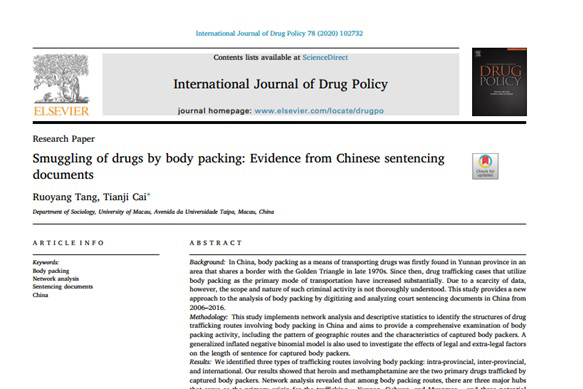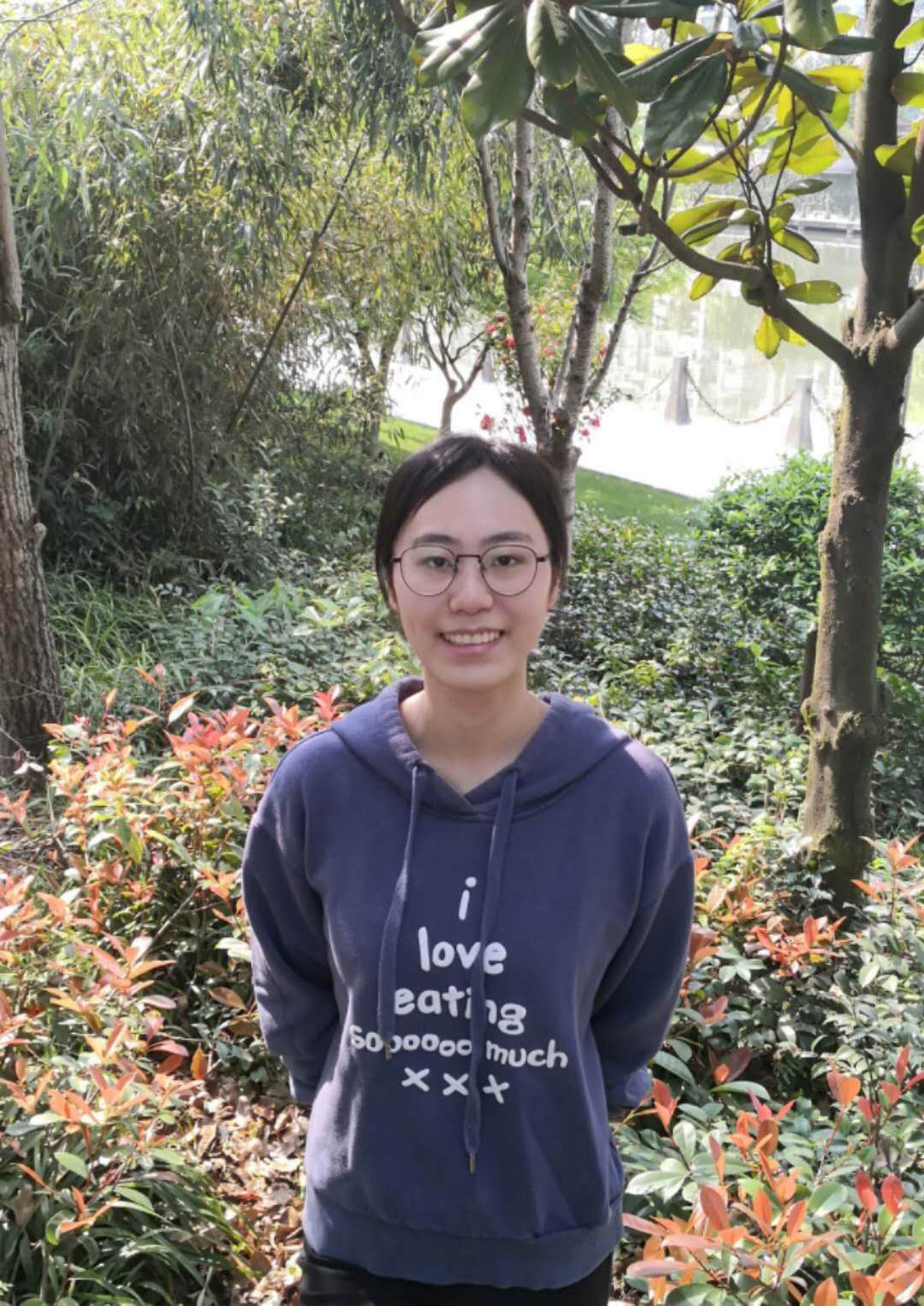A research article titled ‘Smuggling of Drugs by Body Packing: Evidence from Chinese Sentencing Documents’, co-authored by Tang Ruoyang, a PhD candidate in the Department of Sociology, University of Macau (UM), and her supervisor, Cai Tianji, an associate professor in the same department, has been published in International Journal of Drug Policy, a leading journal in the field of substance abuse.
Established in 1987, International Journal of Drug Policy publishes articles on the social, political, legal, and health aspects of psychoactive substance use, both licit and illicit. The journal places an emphasis on the exploration of the effects of drug policy and practices on drug-using behaviour as well as its health and social consequences. Ranked third in the substance abuse category of Social Sciences Citation Index (SSCI), with an impact factor of 4.528 (2018), the journal has a significant influence in the field.
The article studies the practice of body packing in mainland China and the sentence for it. By digitising and analysing court sentencing documents in China from 2006 to 2016, the authors examined body-packing activity, including the pattern of geographic routes and the characteristics of captured body packers in China. Their results have shown that heroin and methamphetamine are the two primary drugs trafficked by captured body packers. Network analysis has revealed that among body packing routes, there are three major hubs that serve as the primary origin for drug trafficking —Yunnan, Sichuan, and Myanmar— and three potential authorities— Guangdong, Xinjiang, and Sichuan—which serve as the common destinations of the drug routes.
The study uses a generalised inflated negative binomial model to investigate the effects of legal and extra-legal factors on the length of sentence for captured body packers. Consistent with previous studies, this study demonstrates that heavier punishments are given in cases that involve a larger quantity of drugs and repeat offenders. Offenders who fall into special groups, such as pregnant/lactating women, people with disabilities, or minors, tend to receive more lenient sentences. However, according to the study, contrary to popular belief, offenders who confess to their crimes are given longer periods of imprisonment. Further analysis has revealed that the logic behind longer sentences for those offenders who confess as opposed to those who do not, is possibly due to the concentration of imprisonment values at fifteen years, as many of the body packers who confess are sentenced to the maximum fixed term of imprisonment.
This article is one of the outcomes of a research project led by Prof Cai on the analysis of Chinese sentencing documents. The research team has completed a series of studies, which has led to the publication of nine research articles in core journals.
Doctoral education in the Department of Sociology has made great progress in recent years. Papers co-authored by students and their supervisors have appeared in top journals, such as China Quarterly, Journal of Quantitative Criminology, and British Journal of Criminology.
澳門大學社會科學學院社會學系博士生湯若陽與其導師、社會學系副教授蔡天驥的合著論文《人體藏毒:基於中國判決書的研究》在一定程度上填補了內地關於體內藏毒研究的空白,為打擊毒品犯罪提供了新思路,獲毒品研究領域的頂級期刊《國際藥物政策》刊登。
《國際藥物政策》雜誌創刊於1987年,主要發表關於精神活性物質的研究,涉及社會、政治、法律和健康等多個方面,特別關注藥物政策對用藥行為的影響和其對社會和健康的危害。其影響因數為4.528(2018),在SSCI之藥物濫用中位列第3,是藥物濫用研究領域極具影響力的期刊。
論文以內地人體藏毒的模式與量刑為研究主題。作者根據運用數據挖掘技術獲得的運輸和走私毒品罪的判決書,應用社會網絡分析方法研究人體藏毒的運輸路線,並通過廣義膨脹負二項模型來考察藏毒者的量刑結果。研究發現,人體藏毒大致涉及省內、省際和國際三種運輸路線,無論以哪一種運輸路線,甲基苯丙胺和海洛因是體內運毒中最主要的兩種毒品。從運輸路線來看,緬甸爲境外主要源頭,雲南和四川則是省際與省內運輸的源頭,而廣東是境外人體藏毒運輸的主要目的地,新疆和四川則是省際與省內人體藏毒的主要目的地。從量刑結果來看,藏毒數量以及累犯與刑期相關,而特殊群體的運毒者(未成年、孕期、哺乳期婦女)會被從輕處罰。與常識相悖,研究發現坦白會加重量刑。造成這一現象的原因可能是由於大多數坦白的體內藏毒者的刑期集中在有期徒刑的最高刑期15年。
該論文是蔡天驥主導的中國刑事判決書系列研究計劃成果之一。此系列通過挖掘刑事審判文書來探究中國刑事審判的規律與特徵,目前已完成多個包括新模型應用、量刑影響因素、與犯罪模式等內容的子課題,並發表了9篇優質論文,對刑事司法研究領域作出了重大貢獻。
近年來,澳大社會系博士生培養取得了長足進步,多個博士生和其導師合作的研究成果發表於專業領域的頂級期刊,如《中國季刊》、《定量犯罪學》、《英國犯罪學》等。



